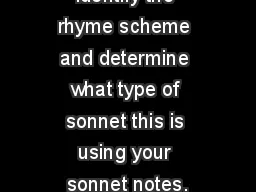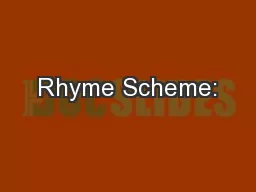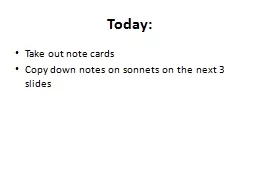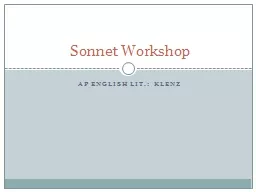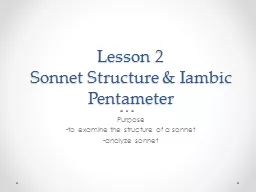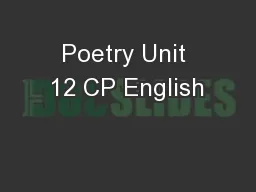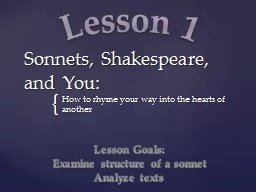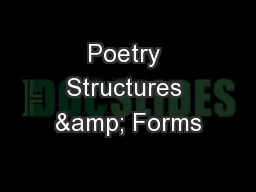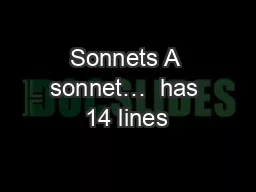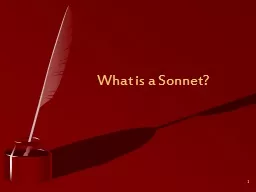PPT-Identify the rhyme scheme and determine what type of sonnet this is using your sonnet
Author : celsa-spraggs | Published Date : 2018-12-17
The expense of spirit in a waste of shame Is lust in action and till action lust Is perjured murderous bloody full of blame Savage extreme rude cruel not to trust
Presentation Embed Code
Download Presentation
Download Presentation The PPT/PDF document "Identify the rhyme scheme and determine ..." is the property of its rightful owner. Permission is granted to download and print the materials on this website for personal, non-commercial use only, and to display it on your personal computer provided you do not modify the materials and that you retain all copyright notices contained in the materials. By downloading content from our website, you accept the terms of this agreement.
Identify the rhyme scheme and determine what type of sonnet this is using your sonnet: Transcript
Download Rules Of Document
"Identify the rhyme scheme and determine what type of sonnet this is using your sonnet"The content belongs to its owner. You may download and print it for personal use, without modification, and keep all copyright notices. By downloading, you agree to these terms.
Related Documents

